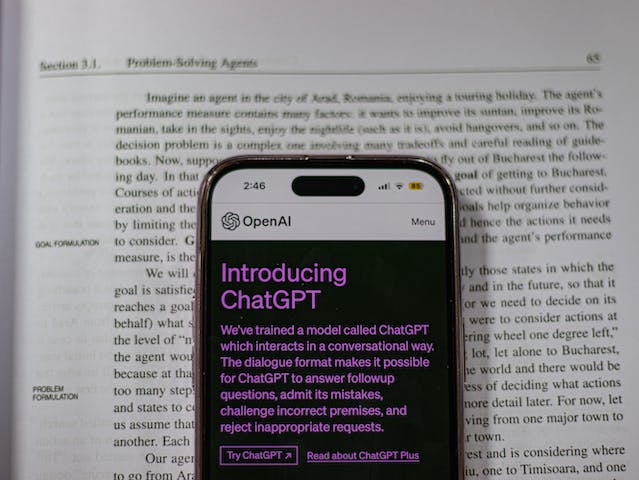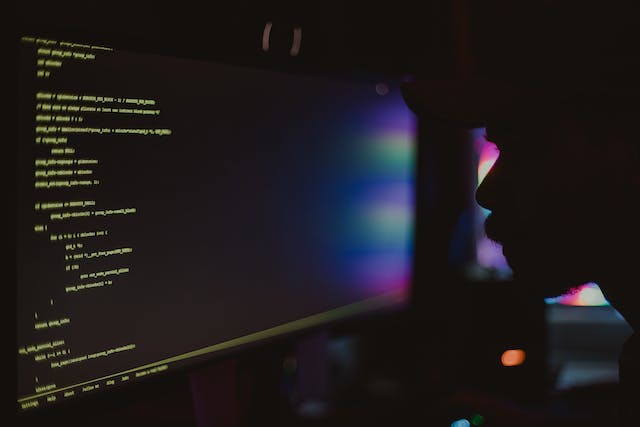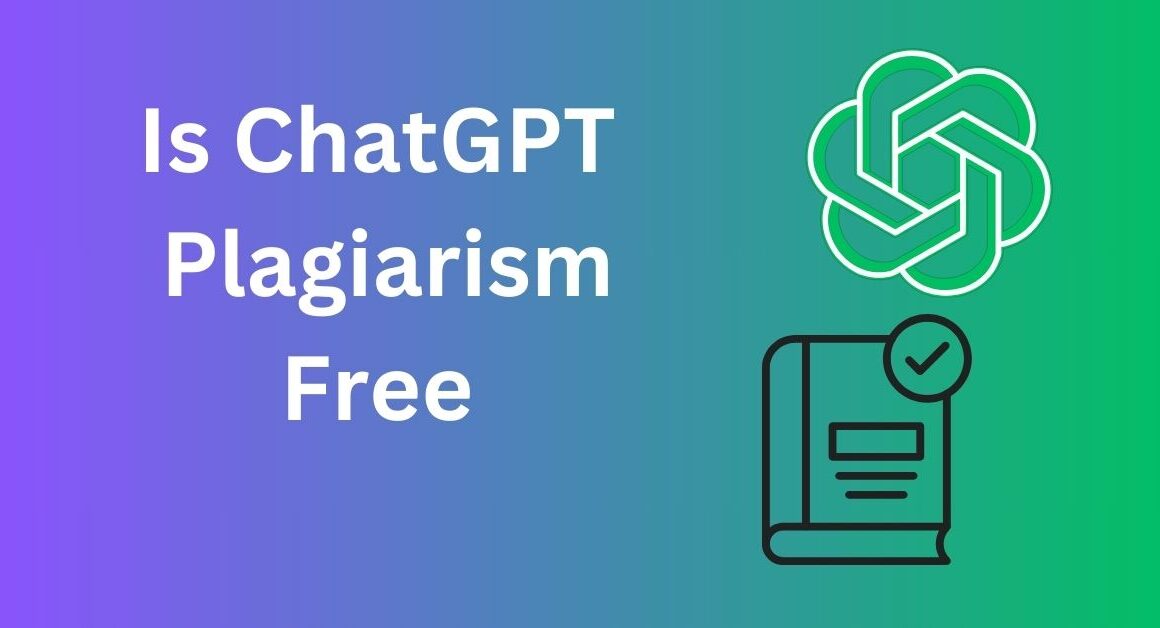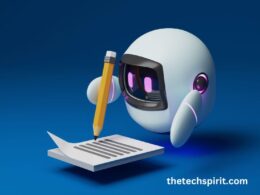ChatGPT, the viral chatbot from AI research company Anthropic, has sparked widespread debate around artificial intelligence and plagiarism. As the adoption of generative AI like ChatGPT grows, many are left wondering – is ChatGPT plagiarism free?
Since its release in November 2022, ChatGPT has demonstrated an uncanny ability to generate human-like responses on a variety of topics. There are growing concerns that some of ChatGPT’s output may be plagiarized or copied from elsewhere on the internet.
In this article, I’ll take an in-depth look at the issue of plagiarism as it relates to ChatGPT. I’ll explore how the chatbot works, analyze examples of plagiarism, discuss the roots of the problem, and provide tips for properly using AI tools like ChatGPT to avoid plagiarism.
Table of Contents
What is ChatGPT?
ChatGPT is an AI chatbot developed by research company Anthropic to have natural conversations. Users can chat with ChatGPT on a range of topics, ask challenging questions, and receive surprisingly human-like responses.
Under the hood, ChatGPT utilizes a large language model trained on vast amounts of text data scraped from the internet. This includes websites, books, articles, and more. By analyzing these training datasets, ChatGPT learns patterns and relationships in human language.

ChatGPT then uses this knowledge to generate new, original responses to user prompts. Rather than simply retrieving and displaying pre-written text, ChatGPT can synthesize unique responses based on its understanding of language from its training process.
How ChatGPT Works: Is ChatGPT Plagiarism Free
To understand ChatGPT’s relationship with plagiarism, it’s important to dive deeper into how this AI chatbot works:
- Large language model architecture: ChatGPT uses a transformer-based architecture with over 175 billion parameters, allowing it to model extremely complex language relationships.
- Trained on massive text dataset: ChatGPT was trained onabytes of internet text data through a process called machine learning. This enables it to generate human-like text.
- Text generation, not retrieval: When responding to prompts, ChatGPT uses its training to generate new text, rather than simply retrieving and displaying pre-existing text.
- Reinforcement learning from human feedback: ChatGPT has been further tuned through reinforcement learning algorithms using human feedback to improve its responses.
This background gives ChatGPT an exceptional ability to understand and generate natural language. It also opens the door to plagiarized content, as we’ll explore next.
Does ChatGPT Produce Original Content?
With ChatGPT’s training process in mind, the question arises – can this AI chatbot write 100% original content?
The answer is complicated. In many cases, yes – ChatGPT can generate novel sentences, paragraphs and even essays that do not directly copy other sources. There are also instances where ChatGPT plagiarizes, often unintentionally.

When responding to a user prompt, ChatGPT is creating new text based on its training. Because this training includes vast amounts of existing content, some of ChatGPT’s output may end up duplicating phrases or even passages from its training data.
In other cases, ChatGPT may inadvertently paraphrase or reconstitute content it was trained on that originally came from elsewhere. This results in responses that are structurally similar and topically identical to existing text.
The end result is that while ChatGPT produces human-sounding text, and much of it is unique, portions of its output still contain varying degrees of duplicated or derived content, lacking full originality.
Can ChatGPT Plagiarize?
Based on how ChatGPT functions, it becomes evident that this AI system does not have an intent to plagiarize in the way humans do.
When instances of plagiarism occur in ChatGPT’s output, it is not the result of ChatGPT deliberately copying or stealing content with intent to pass it off as original, as would happen in typical human plagiarism.
Rather, the AI inadvertently reconstitutes or paraphrases content it was trained on, without any conscious awareness or intent that it is doing so. The plagiarism is unintentional, emerging as a byproduct of ChatGPT’s probabilities.
Even if unintentional, duplicated, or derived text in ChatGPT’s output can still be considered plagiarism if not properly attributed. The AI lacks intent, but the impact is the same.
While ChatGPT cannot actively choose to plagiarize, aspects of how it was designed and trained still RESULT in unoriginal text generation, producing responses that contain varying degrees of plagiarism.
ChatGPT’s Training Data
To better understandChatGPT’s relationship with plagiarism, it helps to explore the training data used to build this AI system:
- Scraped websites and online books: Much of ChatGPT’s training data was scraped from publicly available sites and book archives on the internet without full authorization.
- Limited metadata: Details on the origins of scraped training data were not entirely retained. This makes it harder to attribute instances of plagiarism.
- Wikipedia: 742 GB of English Wikipedia data was used to train ChatGPT, although Anthropic claims this only accounts for 9% of parameters.
- Limited filters: Minimal filtering was done on profanity, biases, fact-checking, copyrighted material etc. in the training data.
- Few attribution examples: Training data did not include many real examples of proper source attribution.
With such training data, ChatGPT has an exceptional linguistic understanding, but limited awareness of attribution norms. This makes plagiarism more likely to emerge unintentionally.
ChatGPT’s Limitations
Along with its training, there are other key limitations built-in into ChatGPT’s capabilities that increase the likelihood of plagiarized output:
- No understanding of plagiarism norms: ChatGPT has no innate understanding of plagiarism or attribution best practices. These are human constructs not covered in its training.
- Limited factual knowledge: ChatGPT has limited world knowledge beyond what was in training data from 2021 and earlier. So it often cannot add new facts or context.
- No concept of ethics: ChatGPT has no inherent ethics system to make judgements on right vs. wrong. So it cannot actively decide if plagiarism is unethical.
- Probabilistic responses: ChatGPT provides responses based on probability rather than truth or originality. More probable responses may end up plagiarized.
- No memory: With no long-term memory, ChatGPT cannot recall or track if it has plagiarized something before.
Together, these limitations result in an advanced linguistic AI with critical gaps in capability around plagiarism and originality.
How to Check for Plagiarism in ChatGPT Output
Given the propensity for ChatGPT to unintentionally plagiarize, it becomes crucial to manually check its responses for originality. Here are some ways to do this:

- Search key phrases in Google: Copy any suspect passages and search them in Google to check for matches.
- Use plagiarism checkers: Paste ChatGPT output into tools like Grammarly or Copyleaks that scan for plagiarism.
- Change wording: Rephrase sentences and key phrases and search again to uncover derived text.
- Evaluate tone and style: Assess if passages have an improbable shift in tone/style that could indicate copied text.
- Check for citations: Watch for responses missing citations for facts that would normally require attribution.
- Review critical points: Carefully examine places like conclusions and data points where plagiarism is more likely.
Applying these validation methods helps reveal if ChatGPT has returned any plagiarized content in need of attribution or reworking.
Examples of Plagiarism in ChatGPT Output
To make things more concrete, here are some real examples of plagiarism that can occur in ChatGPT responses:
- Word-for-word duplicate passages from websites and books
- Paraphrasing of sentences and paragraphs from online sources
- Uncited statistics, definitions, and facts from Wikipedia and educational sites
- Wholesale copying of lists like steps in a process or pros/cons on a topic
- Repurposing of analogy and metaphor examples from published content
- Duplication of sentences detailing scientific or historical info from other sites
- Recombining content from multiple sources into a “new” paragraph
These examples demonstrate how ChatGPT can unintentionally plagiarize varying amounts of content, despite having no intent to do so.
Why Plagiarism Occurs with ChatGPT
Given the examples and limitations discussed, the root causes of ChatGPT’s plagiarism problems boil down to:
- Its training data scraped from the internet without full attribution
- Gaps in its capabilities around ethics, memory, and world knowledge
- Probability driving responses more than truth and originality
- No innate understanding of plagiarism or attribution norms
Essentially, ChatGPTmimics patterns in human language, while lacking the human values, critical thinking, and contextual understanding needed to properly attribute sources and ensure originality.
Despite advanced AI, ChatGPT reflects the saying “garbage in, garbage out” – imperfect training data and design limitations yield imperfectly plagiarized text as output in many cases.
How Anthropic Avoids Plagiarism in Claude
Anthropic, the creators of ChatGPT, have developed a more advanced AI assistant called Claude. The company claims Claude has been designed to avoid ChatGPT’s plagiarism issues through methods like:
- Improved filtering of training data to remove inappropriate, biased and copyrighted content
- Training on attributions and citations to learn proper source referencing
- Watermarking training data to better track origins later
- Restricting responses length to reduce risk of plagiarizing large passages
- Providing context on limitations to users to set proper expectations
Early testing suggests Claude produces significantly less plagiarized content than ChatGPT. It remains an ongoing area of development.
The improvements made for Claude indicate that while plagiarism remains an inherent challenge with large language models, steps can be taken to minimize risks. Vigilance is still required.
Tips for Avoiding Plagiarism with AI
Until the technology further advances, end users of AI systems like ChatGPT play an important role in mitigating plagiarism. Here are some top tips:
- Manually check for plagiarism using Google, plagiarism checkers, close re-reading etc.
- Reword, revise or remove any copied or derived text found
- Only use AI-generated text as a starting point for your original writing
- Avoid generating long-form, fully-written pieces with ChatGPT
- Make the AI cite sources for any facts, statistics and quotes provided
- Ask follow up questions to prompt the AI to expand on points with its own reasoning
- Do not rely 100% on AI output as-is – always verify originality
Taking these steps allows utilizing AI assistance while ensuring you maintain full integrity and avoid plagiarism.
The Future of AI Originality
While ChatGPT does exhibit plagiarism issues now, continued advances in AI research could help address this in the future:
- Better plagiarism detection: AI models may be trained to detect and flag potential plagiarism in generated text.
- Enhanced attribution norms: Reinforcement learning and training on source citing could improve attribution.
- Expanded original knowledge: Models trained on more real-world knowledge may rely less on rephrasing internet sources.
- Explicit ethics alignment: Emerging techniques aim to build ethics and values right into AI systems.
- Creative originality: Models like Anthropic’s Constitutional AI aim to capture more human creativity and imagination.
- Greater transparency: Systems may indicate when responses might need verification against plagiarism.
Ongoing innovation in human-AI interaction, training approaches and model architectures could slowly reduce plagiarism over time. But risks will persist unless solutions are expressly prioritized.
Conclusion
ChatGPT frequently produces responses that contain varying degrees of plagiarized content – ranging from word-for-word duplication to paraphrasing of passages and facts from its training data.
This plagiarism is unintentional and emerges from the current limitations in ChatGPT’s training, knowledge and capabilities. Steps can be taken to minimize plagiarism risk, but fully eliminating it will require ongoing advances in AI safety and ethics.
While not a perfect solution, ChatGPT provides a glimpse of the amazing potential in generative AI – if its pitfalls can be properly addressed.
FAQs
Does ChatGPT intentionally plagiarize content?
No, ChatGPT does not have human intent or awareness and thus cannot deliberately plagiarize. But unintentional plagiarism still occurs due to limitations in its training and design.
What types of plagiarism can occur in ChatGPT responses?
Many forms, including duplicated text, paraphrasing, missing citations, and recombining content from multiple sources into new passages.
How can I check if ChatGPT plagiarized parts of its response?
Methods include using search engines, plagiarism checkers, rewording passages, assessing tone/style shifts, and checking for missing citations.
Why does ChatGPT plagiarize if it can generate text?
Its training on internet data, gaps in capabilities around ethics and knowledge, and probability-based responses enable unintentional plagiarism to emerge.
Does Claude, Anthropic’s new AI, avoid ChatGPT’s plagiarism problems?
Early testing suggests Claude produces significantly less plagiarism due to improved training data, citations training, and safeguards like output length limits. But risks remain present.









